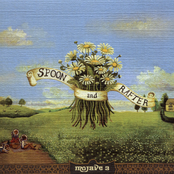David Evans has been busy – not content with turning up the astounding swimming pool photo, he also found time yesterday to nip back to the remarkable barn at Dairy Farm, in Bullings Heath, Walsall Wood, to take some more photographs following the remarkable comment received from Joe Headley in response to the original article.
David wrote:
Hi Bob
I was delighted to read Joe Headley’s comments on your blog recently and am pleased to add these photos of that wonderful structure.
It really is a jewel of a building.
Cheers
David
There’s no question: this really is a rather special building. I’m so glad David has been able to get access and reveal its secrets to blog readers, who otherwise wouldn’t get a closer look.
My gratitude and best wishes to both David and Mrs. Toms, the owner, for a great glimpse into another bit of local history.




 RSS - Posts
RSS - Posts


I think Clive was right about there being much more to this. Surely, it is much older than the Enclosure Act. At least the rickyard reference on the tithe map indicates farming activity more than a century before then. Is the road name any sort of clue: where was the hall?
Could the vintage be similar to the barn Hammerwich Hall Farm?
Looking at the photo of inside the barn, looking at the roof beams, to my untrained eye they are using metal straps to support the beams, and if the metal girders are orignal, that is put in place when it was built, then the pit may have had something to do with the building of it, as they have workshops for the metal work and they made there own bricks. But like most old building it may have been modified many times, and when they were diging the coal under the building it would have been belts and bracers time. Thanks for the photos Dave.
Hi Clive,
Did you see my comment on “Milking it”?
It seems that WW Colliery did mine beneath the Dairy Farm on lease. Probably when they reached the end of the land owned by the Earl of Bradford.
But according to Brian Rollins the surface land was owned by the Trustees of Queen Mary’s school in Walsall.
Just zoomed in on the wooden roof beam on the photo, there is no sign on the main support beams having been cut to take wooden supports, theres just the metal straps, so if its the orignal roof, the building not as old as it looks! I`m more than likley completly wrong, but its fun trying to work out this mystery!
Hello Pedro, yep i have read your comments, thats why i had a closer look at the barn, your research got me wanting to know more about the date of the building.
For the record in 1834 White’s Directory lists as farmers in Walsall Wood…
Edmund Arblaster
Ann L Harrison
William Taylor
Edward Twist
Firstly, thanks to David for further excellent photographs and his kind comment re my post under “milking it”.
Secondly I don’t want to clutter the historical significance and the research done by all you other great bloggers with my less significant boyhood memories. To Clive I really can’t remember that steel frame being in situ but I can’t be absolutely certain. The holes in the interior wall behind the steel frame certainly weren’t there so it has had, I would guess, many modifications in just the last sixty years.
Joe –
please, please, please feel free to contribute. Your memories – however insignificant they may seem to you – are not clutter.
We don’t do ‘historical significance and research’ here; we do interesting stuff, whether it’s Andy Dennis in his pushchair as a child in a Mexican standoff over a carrot outside the greengrocers, Audrey Proffitt getting covered in cow entrails at the slaughterhouse or the Pelsall boiler explosion. Out of the tiniest memories great threads have evolved.
Seriously, it’s important we capture this stuff while it’s remembered. Please feel free. If you don’t want to comment it, mail it to me at BrownhillsBob at Googlemail dot com.
But please, never feel stuff is insignificant. It’s all memories.
Cheers for your wonderful contributions
Bob
Hi folks
that metalwork is much later than the barn. Those are threaded fastenings, not rivets, and the angle plates are precision cut, rather than Smithed. I’d tenure a 1930s vintage (think of the old Iron Bridge ar Pier Street, or the Black Cock Bride, which were hot riveted).
Not clear of the roof-beam thing. There’s clearly a structure added in the apex that isn’t original, but I’m interested in the raggedness of the brickwork in the foreground, and wondering if the roof is later than the walls.
Cheers
Bob
Hi Bob
I have been looking at the brickwork in these photos…Does the bonding of the bricks,and their colour give any clue? The St Johns school used different bricks..1857(?) and some of the bonding was described as “Flemish” by the site manager..But the barn seems to have different bonding. and have similar bonding to a building I know well which is dated 1844.
The time of the great railway expanson in the mid 1850s, and the projected local line that in the event did not materialise, saw land being bought at silly prices. Perhaps this may have given the funds to build such an elaborate barn is this, perhaps?
I feel a little out of my depth on this one , but I do appreciate the comments and input being offered .
Kind regards
David
That’s a brick bond that my dad called “English Garden Wall” – away from the corners, It is rows of headers interspersed with three rows of stretchers.
Flemish Bonds have headers and stretchers in the same row.
Evening all……. I can’t contribute technically to the conversation at all or be of any help in trying to pin down the dates etc but I would like to thank the owners of the building for such wonderful access to their building and for allowing David to take the amount of photographs that he has, thank you….
Peter
The two examples of brickwork in this post are more like English bond, i.e. rows of stretchers (side on) punctuated by rows of headers (end on), though in the classic style layers alternate one to one.
In Flemish bond, which is apparently not Dutch in origin, all payers have alternating stretchers and headers. I can’t see any examples of Flemish bond in Milking It, either.
Staffordshirebred also commented on Facebook:
‘Secondly, I showed the beautiful barn to my husband to ask for his observations, which I found interesting: 1) Definitely an “Estate” building – the top of the range tradesman who might have built more “residential” buildings on the estate would have been seconded onto farm buildings too. 2) The vast openings at either end on such buildings enable huge horse drawn carts to drive in, be discharged from either side, and drive straight out. He did same in Yorkshire – from late 50’s – but with previously horse drawn vehicles converted so they could be pulled by tractors.’
This is interesting. It had not occurred to me before, but Hall Lane. Where was the Hall, or was Hall the surname of a person?
Cheers all
Bob
One of the maps you linked the other day calls Hall Lane “Hall’s Lane”, I think, which may suggest the latter.
Pingback: Cattle class | BrownhillsBob's Brownhills Blog